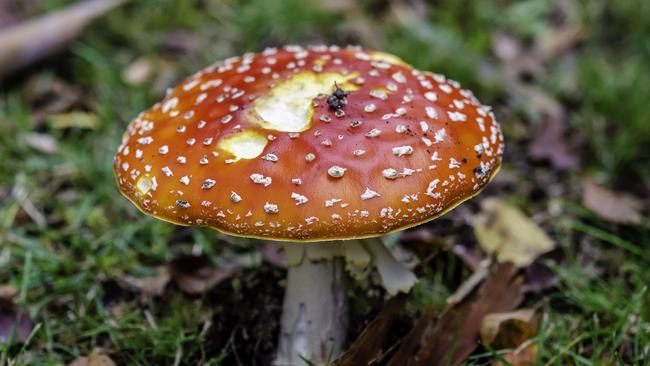Veggie patch mushrooms poisoned mother, her daughter and their dog. Find out what to avoid
Beware the potentially fatal risk of wild mushrooms – 19 children under five have already been poisoned this year as one Adelaide Hills mum shares her veggie patch horror story.
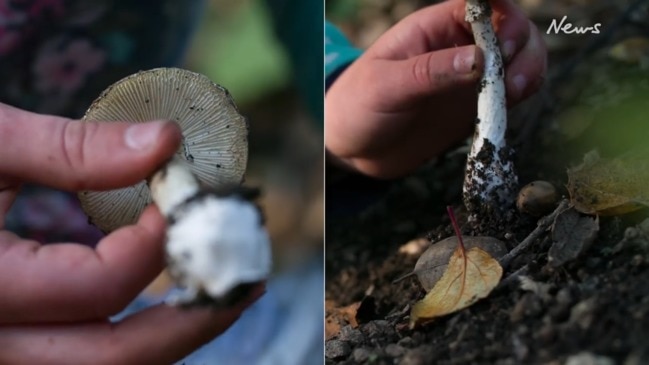
SA News
Don't miss out on the headlines from SA News. Followed categories will be added to My News.
Alice Both thought growing her own vegetables was a healthy move - but her backyard mushrooms turned out to be toxic and she ended up seriously ill in hospital.
“I didn’t realise I would have something deadly poisonous in my vegetable garden,” she said.
Ms Both had wanted to grow mushrooms in her shed as she had seen it online. When that didn’t work, she moved the mushroom compost into her Adelaide Hills vegetable garden to improve the soil.
“When button-like, white mushrooms popped up under my vegetables, I assumed they were from the compost,” she said.
“Even though I was cautious, I picked and cooked them. I ate them and, obviously, poisoned myself”.
She woke the next day suffering from gastro. She identified the mushrooms with an app on her phone, and realised they were deadly.
Her family took her and her daughter to the Mount Barker emergency department, and while her and her 12-year-old daughter was ok, Ms Both ended up at the Royal Adelaide Hospital.
“I was dizzy, I felt like I was fading away at that point. I felt very unwell, I had a fever,” Ms Both said.
Luckily, her daughter, while still ill, was not as badly affected.
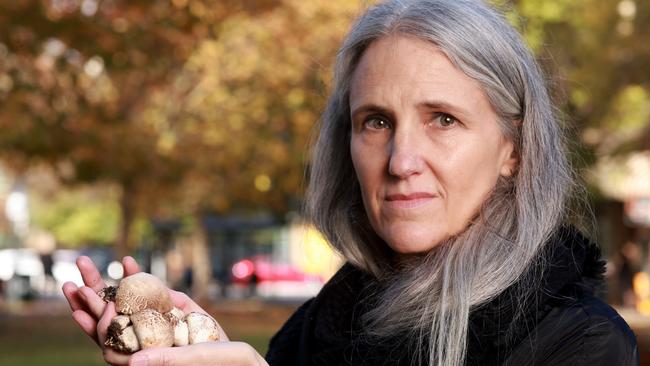
As the cooler weather sets in, SA Health has warned of the potentially fatal consequences of wild mushrooms, particularly for young children. Already this year, 19 children under five have been poisoned.
Dr David Simon, branch director of the Health Department’s Scientific Services, said that while some wild mushrooms look safe, ingesting them can cause serious harm or death.
“Each year, around two-thirds of calls made to the hotline about mushroom poisonings involve children under five,” he said.
SA Health said of 109 calls about mushroom poisoning in 2021, 45 cases involved children under five, and 27 went to hospital.
So far this year, there have been 24 calls about mushroom poisoning, 19 cases involving children under five.
An SA Health spokeswoman said the safest way to eat mushrooms was by buying them from greengrocers and supermarkets.
Mushroom poisoning causes violent stomach cramps, nausea, vomiting and diarrhoea.
It can take several hours for symptoms to appear and they can last for three days.
Poisoning from mushrooms such as the death-cap can cause serious liver damage, which can also be fatal.
And victims are not always humans. Some weeks ago, Ms Both’s dog had been sick, which the family and vet put down to a snake or spider bite.
If you suspect that you or someone else has consumed a wild mushroom, contact the Poisons Information Centre on 13 11 26.
Top five mushrooms to avoid
1. Death cap mushrooms (Amanita phalloides)
Usually grow near established hardwood trees – most commonly under oak trees. Death cap mushrooms are reported to grow, peel and taste just like a harmless field mushroom and are sometimes mistaken for edible straw mushrooms, used extensively in Asian cooking.
Death cap mushroom, a deadly poisonous variety which has been found sprouting in the Adelaide Hills.
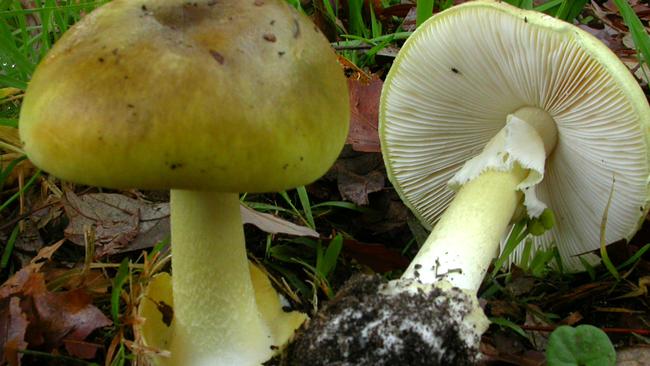
2. Yellow-stainer mushrooms (agaricus xanthodermus)
This mushroom looks very similar to the cultivated mushroom (sgaricus bisporus) and edible wild mushrooms such as the field mushroom (sgaricus campestris). It can grow in large clumps in lawns and gardens.
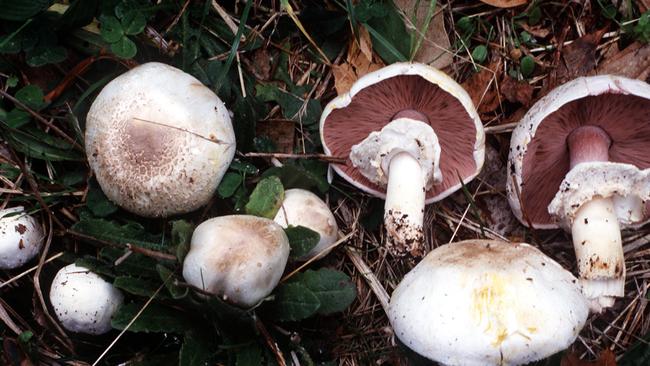
3. Ghost fungus (Omphalotus nidiformis)
The ghost fungus is notable for its bioluminescent properties. It has a fan or funnel-shaped body with cream-coloured caps, overlain with shades of orange, brown, purple, or bluish-black. It is generally found growing near dead or dying trees.
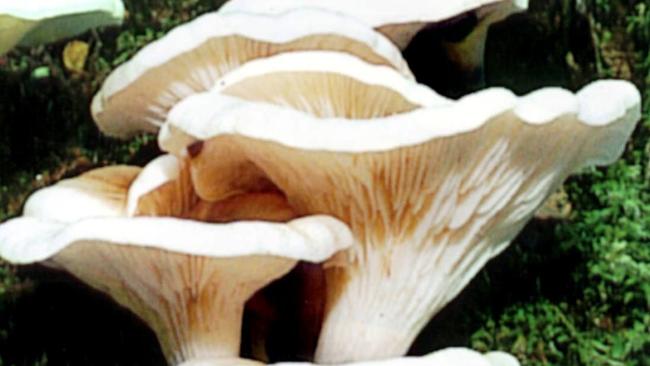
4. Poison pie (Hebeloma crustulinoforme)
Commonly known as poison pie or fairy cakes, this gilled mushroom has a radish-like smell and bitter taste. It is generally found in open woodland.
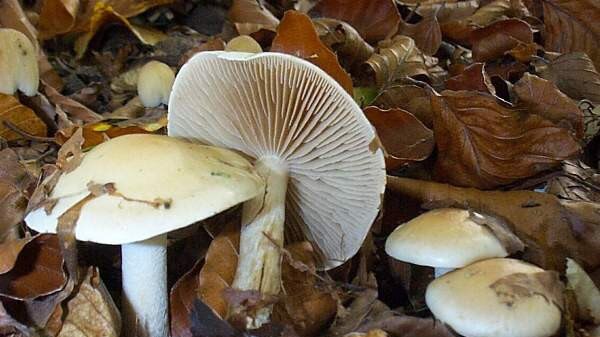
5. Fly agaric (amanita muscaria).
Arguably the most iconic toadstool species, the fly agaric is a large white-gilled, white-spotted, usually red mushroom. It is traditionally used to attract and kill flies and grows under pines.
